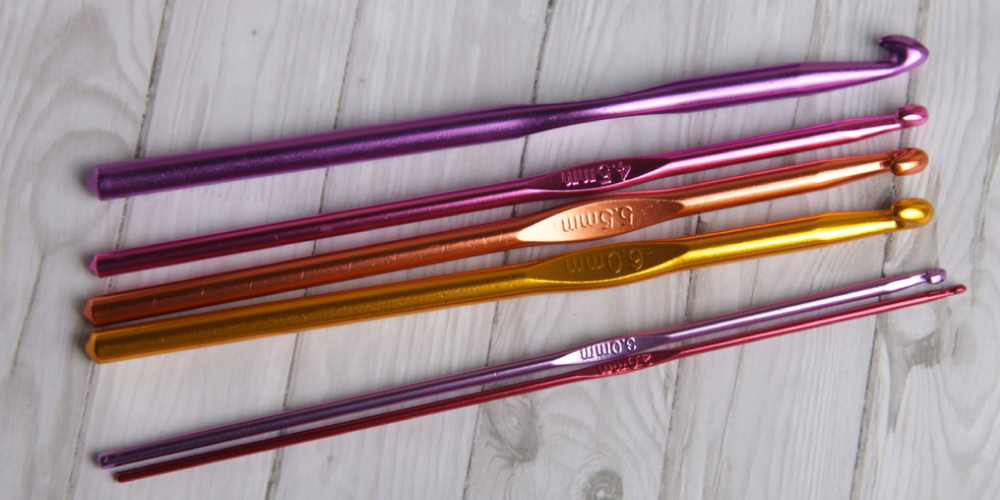
Everything You Need to Know About Knitting Needle Sizes
Every project that you lay your hands on requires a specific sized gauge and knitting needle size. For beginners, all this information can be especially annoying. What size to choose? What type of needle to use and basically hundreds of other questions setting your nerves on fire.
Different sizes have different purposes. The type of yarn, your project and the final result are all directly linked to the outcome of your project. Once you understand these sizes, you will become from rookie to pro in just a matter of minutes.
Needle sizes in a nutshell
You will often see that knitting needles are labelled with both US, UK and/or metric sizes. One may think that US 5 and 5 mm are the same, but they’d be wrong by a far stretch. In metric numbers, a US size 5 is a needle size 3.75 mm. On the contrary, the UK sizes are completely opposite to that of US sizes. In US sizes, the smallest number denotes the smaller needle while in UK sizes, the smallest number denotes the largest number.

Choosing the right size
Most projects clearly mention the size of needle you need. It is important to pay attention to the pattern and make sure to use the right sized needle before you begin the first stitch. If you are confused with the numbers mentioned in the pattern, it is most likely that the sizes have been mentioned in US measurement.
If you are making a project of your own, you probably in all likelihood are an experienced knitter and clearly know what kind of needle size works best with the type of yarn chosen.
To further enhance the final result of your project, one can/may even use two or three different types and sizes of yarn in a single project. To choose the correct needle sizes in such a project, it is always best to refer to the metric sizes of your needle size and the type of yarn being used.
For knitting needle sizes 17 (US) and up, a bulky to super bulky yarn might be the most ideal choice. Jumbo yarn is great for weighted blankets and other large projects. For sizes 10 and up, you will also most likely choose bulky and super bulky yarn. Choose for projects that call for bigger needles.
From ten and below is where the magic happens. Most of your regular sized projects will lie in-between these numbers. The numbers are also where knitters learn to use their needles first. All of them work equally great for working with worsted weight yarn. Regular projects like scarves, hats, tops, sweaters, cardigans, art pieces, etc.
The smallest needles are best used for delicate projects and sock weight yarn. Ideally used only by experienced knitters, ideal garments that one can knit using these sizes are socks, lace patterns and other delicate projects.
Here is a quick reference guide of various knitting sizes vs metric guides so that you can quickly choose the best yarn and start knitting away.
Metric Sizes UK Sizes US Sizes
2.0 mm 14 0
2.25 mm 13 1
2.75 mm 12 2
3.0 mm 11 -
3.25 mm 10 3
3.5 mm - 4
3.75 mm 9 5
4.0 mm 8 6
4.5 mm 7 7
5.0 mm 6 8
5.5 mm 5 9
6.0 mm 4 10
6.5 mm 3 10 1/2
7.0 mm 2 -
7.5 mm 1 -
8.0 mm 0 11
9.0 mm 00 13
10.0 mm 000 15
12.0 mm - 17
16.0 mm - 19
19.0 mm - 35
25.0 mm - 50
We hope that you now have a clear understanding of the various knitting needle sizes and the type of yarn that goes well with each yarn. For more such information, visit: https://vardhmanknitworld.com/blogs/knitting-diaries

